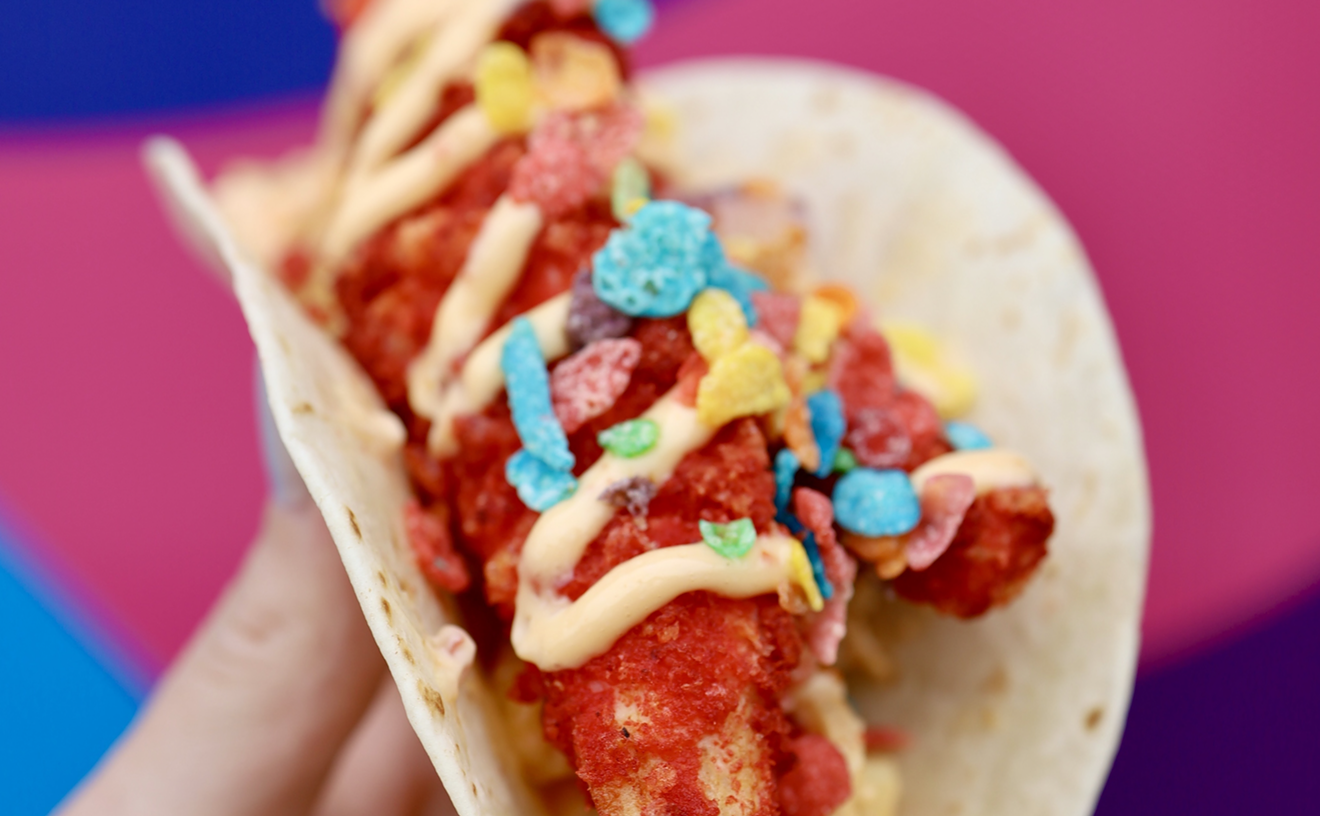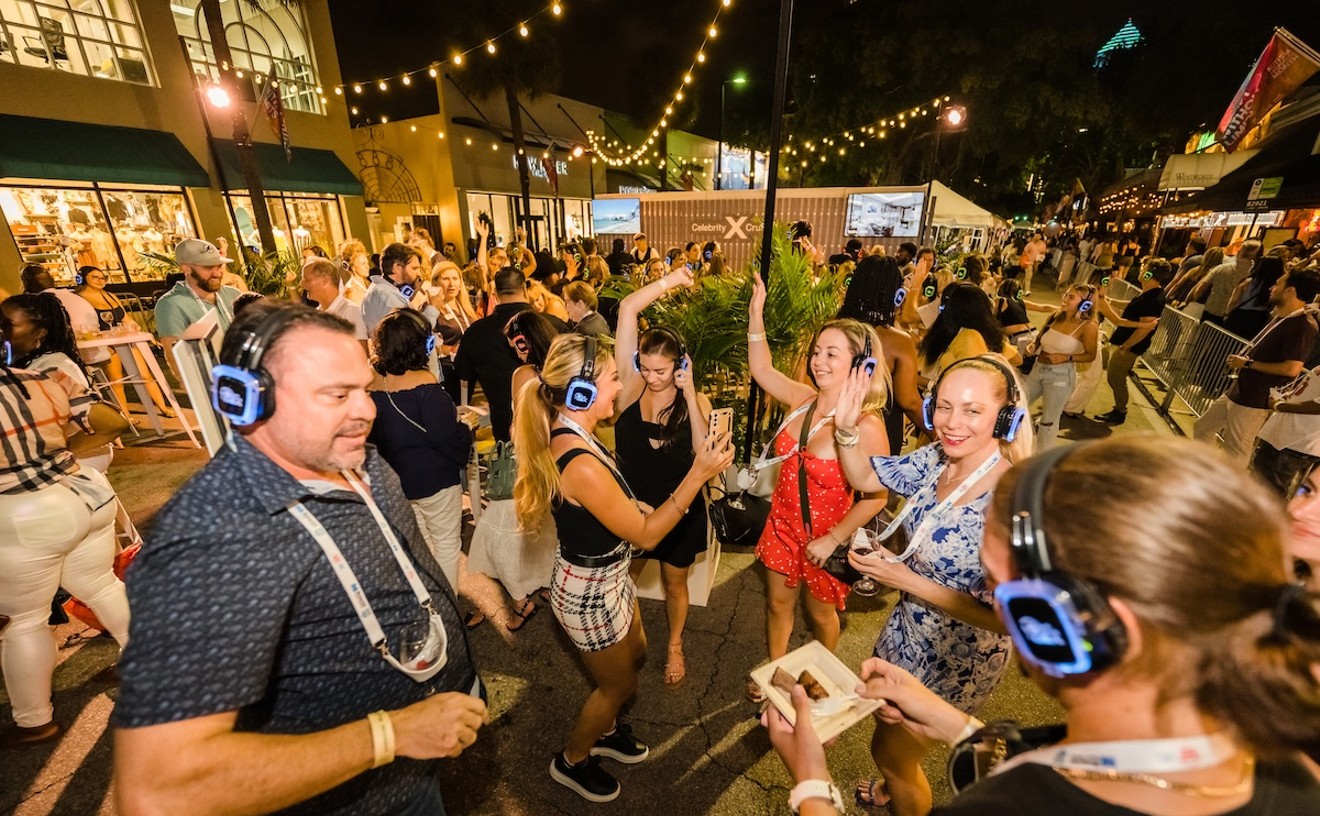A wide grin spreads over Niven Patel's black-bearded face as he emerges from his gray stucco house in Homestead and strides into the backyard he's slowly converting into a farm. His thick-framed Ray-Ban eyeglasses disappear into a dense crop of hair that swivels side-to-side as he surveys rows and rows of waist-high stainless-steel planters overflowing with greenery.
Mottled, spade-shaped taro leaves that Indians call elephant ears burst from wood-edged boxes. A spindly papaya tree emerges from the corner. Delicate carrot greens pop out of soil near long, woody stalks of turmeric and ginger. Nearby is the busy foliage of Indian purple sweet potatoes that Patel says are termed rotaru.
Nearly every plant in his backyard has some purpose, edible or otherwise. More than a dozen lychee trees border the property. A fuzzy-leafed camphor vine on the back patio smells like Vick's Vaporub. Not far away is the sprawl of lemongrass he and his family steep with ginger in black tea nearly every day. Across a small patch of grass is an unassuming curry tree whose leaves constantly find their way into his cooking. "This is my pride and joy," he beams as he pulls down a branch filled with the fragrant dark-green teardrop-shaped leaves.
Soon after, four cooks who will work the kitchen at his forthcoming Downtown Dadeland restaurant, Ghee, arrive to help harvest some of the day's produce. They're all bent over, carefully inspecting bushy plants covered with thin neon-green bean pods bearing tender black-eyed peas. The plumpest ones are pulled off the branches, piled into large wooden bowls, and ferried into the marble-floored kitchen to be shelled and dumped into a fragrant stew.
Patel's mother-in-law, Indira, tends to the gurgling orange-red boil called choori. She flavors it with coriander, black mustard, and chilies, allowing it to simmer for about 20 minutes before adding flat, toothsome dumplings made with chickpea flour and spiced with garlic, ginger, turmeric, and the dried tree resin called asafoetida.
"People think Indian food is all spices," Patel says. "It's not, especially where we're from; the spices take a back seat to the produce."
Patel's forthcoming restaurant is the most anticipated of Miami's high season.
tweet this
Ghee, slated to open early next year at 8965 SW 72nd Pl., is without a doubt the most anticipated of Miami's high season. At a recent run of pop-up dinners and one-off events, Patel has served dishes such as sprouted mung bean samosas and those big taro leaves brushed with chickpea paste and then rolled up and crisped. The new place will specialize in those, choori, and other dishes of the Indian state of Gujarat, situated on the country's western reaches.
Patel and his wife trace their roots to this fertile region with a large vegetarian population. Ghee will give new meaning to Indian food in Miami if the city's diners open themselves up to dishes beyond the vindaloos and rogan joshes that have become the standard-bearers of Indian cuisine.
Patel's family never considered him a transformative chef. Beginning in the early 1970s, the first of 30 of them settled in Jacksonville, where his father and uncles bought convenience stores and later hotels and large real-estate developments. Growing up, he was hardly interested in playing with his cousins. Instead, he enjoyed working in the kitchen, helping his aunts and cousins prepare cauldrons of Gujarati cuisine for family gatherings.
Despite his knack for cooking, he followed his family's wishes and attended business school at the University of North Florida. But it took only three semesters to realize that was a mistake. His wife Shivani explains, "He said, 'I can't do this anymore. I want to cook.'?"
He even asked his entire extended family to come to his house for a seven-course dinner in hopes of calming his parents' concerns over his career choice. "After that, they said, 'We'll send you to culinary school,' even if they were a little hesitant," Patel says.
In the years that followed, he worked at Fort Lauderdale's 3030 Ocean under chef Dean Max before leaving for Italy for six months of travel and cooking. Upon returning, he began running the kitchen in Islamorada's chic Cheeca Lodge & Spa. Later, in 2012, he became chef de cuisine at Michael Schwartz's eponymous Design District restaurant.
That was when Patel began building his farm and when hints of his current project began to surface. One clue while he was at Michael's Genuine was a special of roasted okra, split open, stuffed with coconut, and covered in a sauce of tomatoes and curry leaf.
This past March, Patel left his post at Michael's and announced plans to open Ghee with his wife. Since then, the two, along with Shivani's parents and a small troupe of cooks that followed Patel from Michael's, have been scrambling to learn and perfect a menu of Indian cuisine unlike anything Miami has seen before.
Each month, they gather at Patel's house to develop and test the items that will fill out Ghee's menu. "Most of these dishes are homestyle food, things we grew up with," he says.
They spend hours making chickpea rollups from a fragrant batter that's spread into a thin layer and allowed to set until it takes on the consistency of Jell-O. They're coiled up, sliced into bite-size pieces, and sprinkled with black mustard seeds and cilantro.
Those taro leaves appear again, this time chopped into rough shreds, combined with sautéed onions and chickpea batter, and then flash-fried, yielding a light Gujarati version of India's beloved fritters called pakoras.
And though Niven is the chef, it seems as though Shivani and her mother are the ones who run the show. The latter is a strict teacher who dispenses lessons with a firm hand and wide smile. She chides Patel for failing to cut the turmeric-stained dumplings into perfect diamonds. Later, while the quartet of cooks fills and folds samosas, she carefully monitors their progress. If the shape is wrong, she makes them reopen and reseal the ruffled edges.
Still, Patel's greatest challenge won't be training cooks who've never made Indian food before. Nor will it be running his farm, which requires him to wake up around 6 a.m. to pluck the day's harvest while also scouring the dozen-and-a-half planters for pests that could wreak havoc on his operation.
Instead, it will be introducing guests to a bounty of new ingredients and preparations. For that, the plan is to parse the menu carefully, in a way that will lure people who've never even heard of Gujarat or any Indian dish other than butter chicken. It's an educational process, Patel says. Rather than list those elephant ears on the menu as patra, their Indian name, they'll simply be listed as taro leaves. Those chickpea rollups will be called chickpea rollups rather than patchouri.
"If we stick to traditional names and don't present the food in a way that people understand, they aren't going to eat it," he says. "What we're trying to do has never been done before."











